Paralympian Amy Purdy Rises Up Again After A 'Devastating' New Health Hurdle
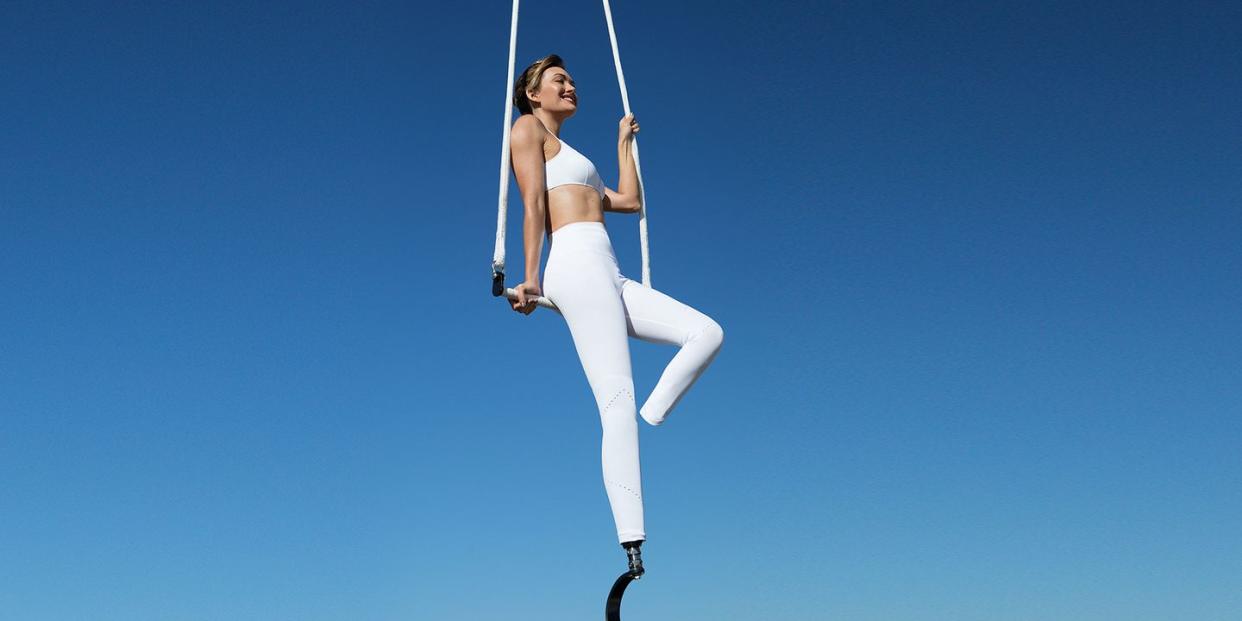
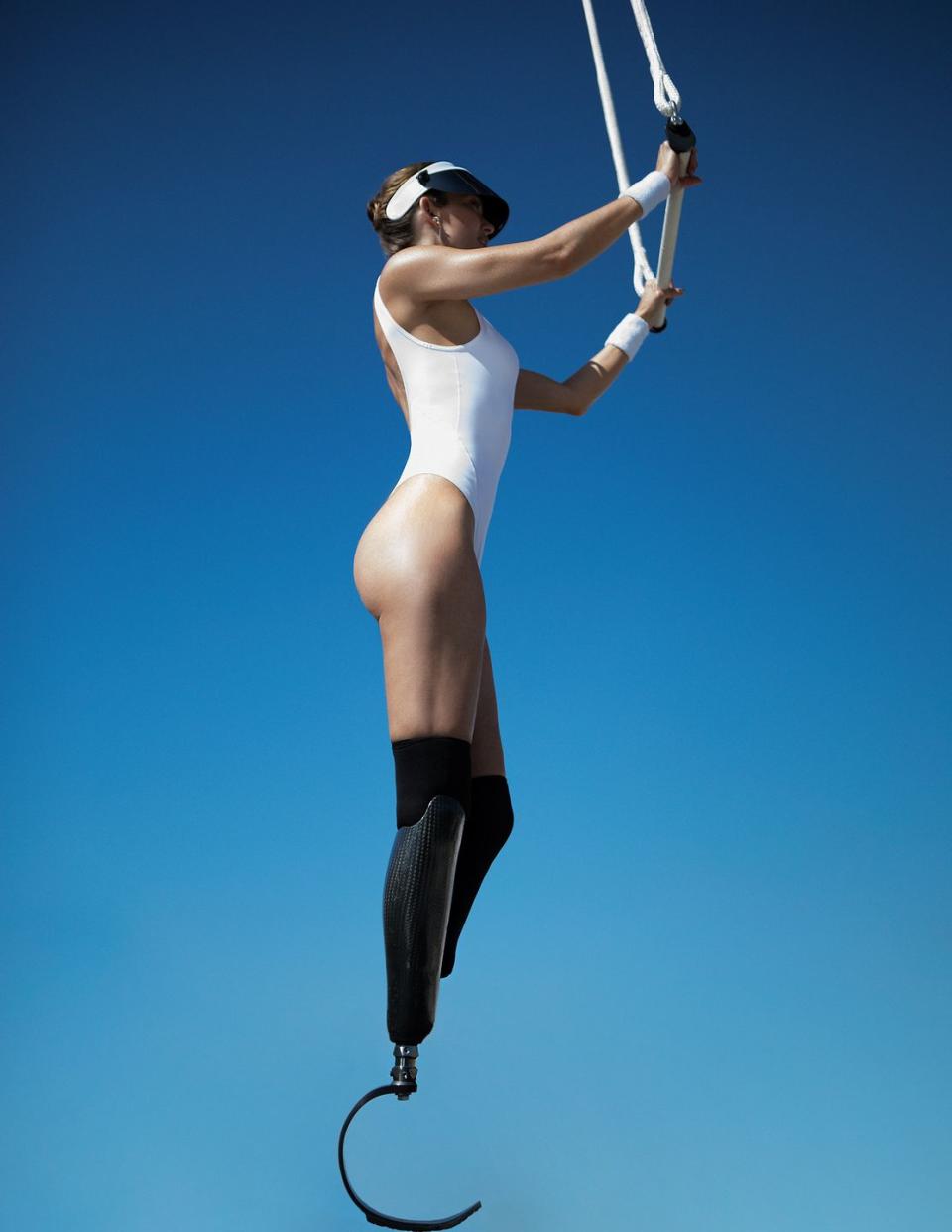
It's February 2019 and Paralympian Amy Purdy is on top of a mountain in Colorado. She spends four hours snowboarding on her two prosthetic legs, cruising, riding powder, just having fun.
The adrenaline rush she gets on her board is sweetened that day by the fact that Amy’s reached a new peak—not just on the mountain, but in life. She’s healthy, her motivational speaking career is on fire, and her New Year’s resolution is to be in the best shape of her life for her 40th birthday in November.
But just one week later, Amy feels a cramp in her left calf while giving a speech in Las Vegas. Two days after that, she wakes up in excruciating pain. The diagnosis: a massive blood clot in her left leg spanning from her hip to beneath her knee. "It pretty much came out of nowhere," she says.
Soon after, the U.S. Paralympic snowboarder and Dancing with the Stars runner-up learns there's nothing her doctors can do—and fears she may never be able to wear a prosthetic on her left leg again.
She enters a new stage in her life—one that she’s calling Amy Purdy 3.0.

By the time I meet Amy at this shoot in October, she's been living without her left prosthetic for seven months. She arrives on set maneuvering deftly on a pair of crutches, traveling with an assistant who helps her navigate tricky scenarios—like, say, opening the bathroom door or carrying a cup of coffee.
Amy is no stranger to physical hurdles. When she was 19, she left her job as a massage therapist early one day with what she thought was the flu. Less than 24 hours later, she was in the hospital on life support. She was diagnosed with bacterial meningitis and had both of her legs amputated below the knee. She also lost both kidneys and received a transplant from her father that she calls her “greatest gift.”
To say Amy bounced back almost sounds ridiculous, given the scope of her achievements in the 20 years since she lost her legs. Once she recovered from the amputations, she more or less strapped on her prosthetics and was "go-go-go" for the next two decades: winning three Paralympic medals, completing stints on DWTS and The Amazing Race, building a robust motivational speaking career, and cofounding the Adaptive Action Sports organization she runs with her husband of four years, Daniel Gale.
Which is why it’s so hard for her to imagine a life without her prosthetics. "For the first time ever, I'm experiencing what it feels like to have something that's really debilitating," she says.
Today, I can glimpse the toll the past few months have taken. Her ever-present smile falters when she finds herself getting fatigued on set from standing on just one leg or using her arms to support her entire body weight on the swing. She’s quick to request a chair be placed near her so she can take frequent breaks. And I can tell that the prospect of accidentally injuring herself further—or pushing her body too far—haunts her.
Given the past few months of her life, I don’t blame her.
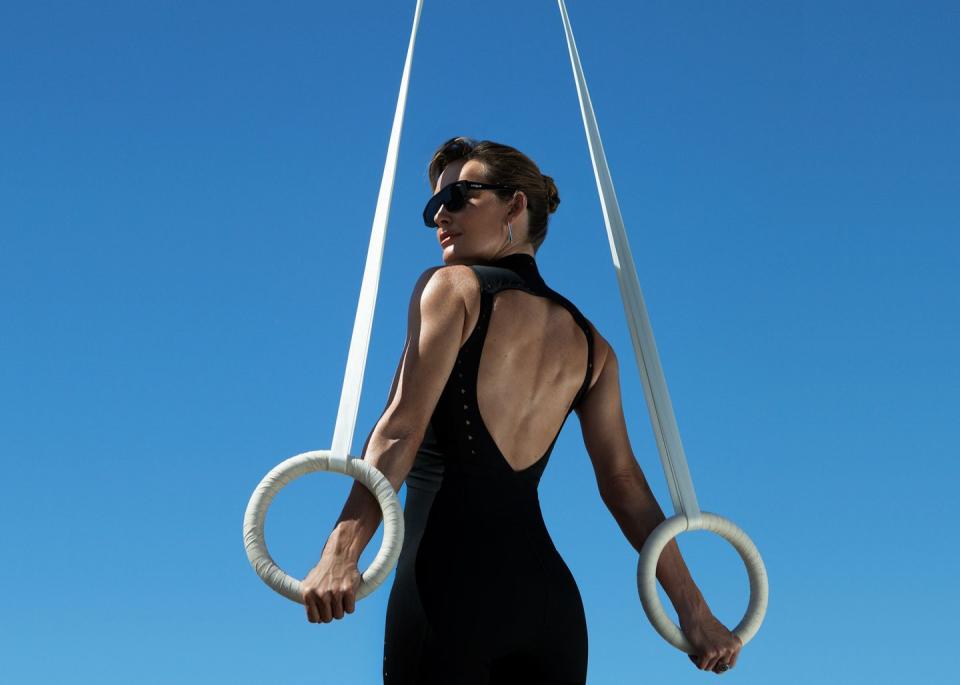

I sit down with Amy as she's getting her makeup done, and she takes me back to that pivotal moment when she received her diagnosis in February: Afterward, she immediately undergoes emergency surgery, and while doctors successfully remove the clot from her thigh, they can’t extract it from her knee or lower leg.
Amy faces a dilemma: Further procedures will put her kidney at risk. But if she does nothing, she worries she may be in a wheelchair for the rest of her life.
"I really had to think, 'Do I want to continue to live healthy, with this kidney, and without a leg, or do I want to save my leg, and risk losing my kidney and going through another transplant?'" says Amy.
Determined to find a way to walk again, Amy gets on the phone. She calls the vascular surgeon who operated on victims of the Boston Marathon bombing. She rings up Dr. Oz. "I called every celebrity friend I have," she says.

Eventually, she finds a doctor in Denver who agrees to treat her while minimizing risk to her kidney. He opts for a procedure that other doctors dismissed because they feared it wouldn’t be effective on an amputated leg.
The treatment involves using a catheter to drip a clot-busting solution into Amy's leg for 24 hours. "It was the most excruciating thing I’ve ever felt," Amy says. "I basically yelled and moaned for 24 hours straight. Even the strongest combination of painkillers didn’t help."
But it works—the clot is gone. The next challenge: to get Amy's blood flowing through her leg again.
Amy spends the next three months recovering. Finally, in June, she feels ready to try on her left prosthetic for the first time. But almost immediately, Amy says, "my leg turned purple and lost circulation at the very bottom."
The culprit: Though the clot is gone, Amy's arteries are drastically shrunken due to the trauma, meaning blood flow to her leg is restricted. "It was bad news after bad news after bad news for about four months straight," Amy says. "The only escape I would have was just to go soak in the bathtub and cry."
The solution to this new hurdle involves a procedure that literally stretches out Amy's arteries. Painful, yes, but ultimately it dramatically improves blood flow and provides relief for some of the discomfort Amy has experienced since February.
What follows is a recovery regimen that makes me wonder why I can't seem to dedicate five minutes a day to my foam roller. For three hours a day, five days a week, over the course of six weeks, Amy sits inside a hyperbaric oxygen chamber in an attempt to improve circulation in her blood vessels.
She removes all traces of oil, lotion, makeup, and nail polish from her body before entering the submarine-like tank each day, because the high-pressure oxygen levels render everything inside of it highly flammable.
Her first treatment leaves one of her eardrums bruised due to the high pressure inside the chamber—a side effect she knew she was risking going into the procedure—but she finds a doctor to put in tubes and goes back for more. "It really became empowering for me, because it was something that I could do actively every single day to help my body heal and get through this," Amy says.
Those weeks are the first since the clot appeared that Amy hasn't cried at all.

Once Amy tires of crutching around set, she emerges with a “beep beep!” from her dressing room, riding atop the chicest motorized scooter I’ve ever seen. A gift from a sponsor, the sleek device resembles a cross between a Segway and a Razor scooter with a seat attached.
Amy looks cooler on this scooter than I’ve ever looked...in my life, but still, she says she was initially self-conscious about using it. She is used to walking everywhere by herself—and was wary of the stares.
The past seven months have been as much a physical test as a mental one for Amy.
"It's been the most humbling, terrifying experience of my life," she says. "Even more so than when I lost my leg 20 years ago."
After spending the past two decades being fully independent, Amy now needs her husband or an assistant to accompany her everywhere she goes, and she schedules events two weeks apart so she can recover at her home in Colorado in between.
For Amy, dealing with the emotional fallout of her newly restricted mobility requires a lot of self-care. She describes her bathtub as her "sanctuary" where she can break down and cry when she needs to, and she’s also started meditating each day. She has a go-to Spotify playlist, with songs like "Hair Om" by Janet Stone and DJ Drez, that helps ground her and remind her of what's important in life.
Olympic-level workouts are not a possibility for Amy right now—and the shift is forcing her to learn a lesson in "true self-love and self-acceptance."
"I have more scars, my legs aren't in shape like they normally are, and it's just understanding that we all go through seasons, and this is just a season that I'm in," she says.
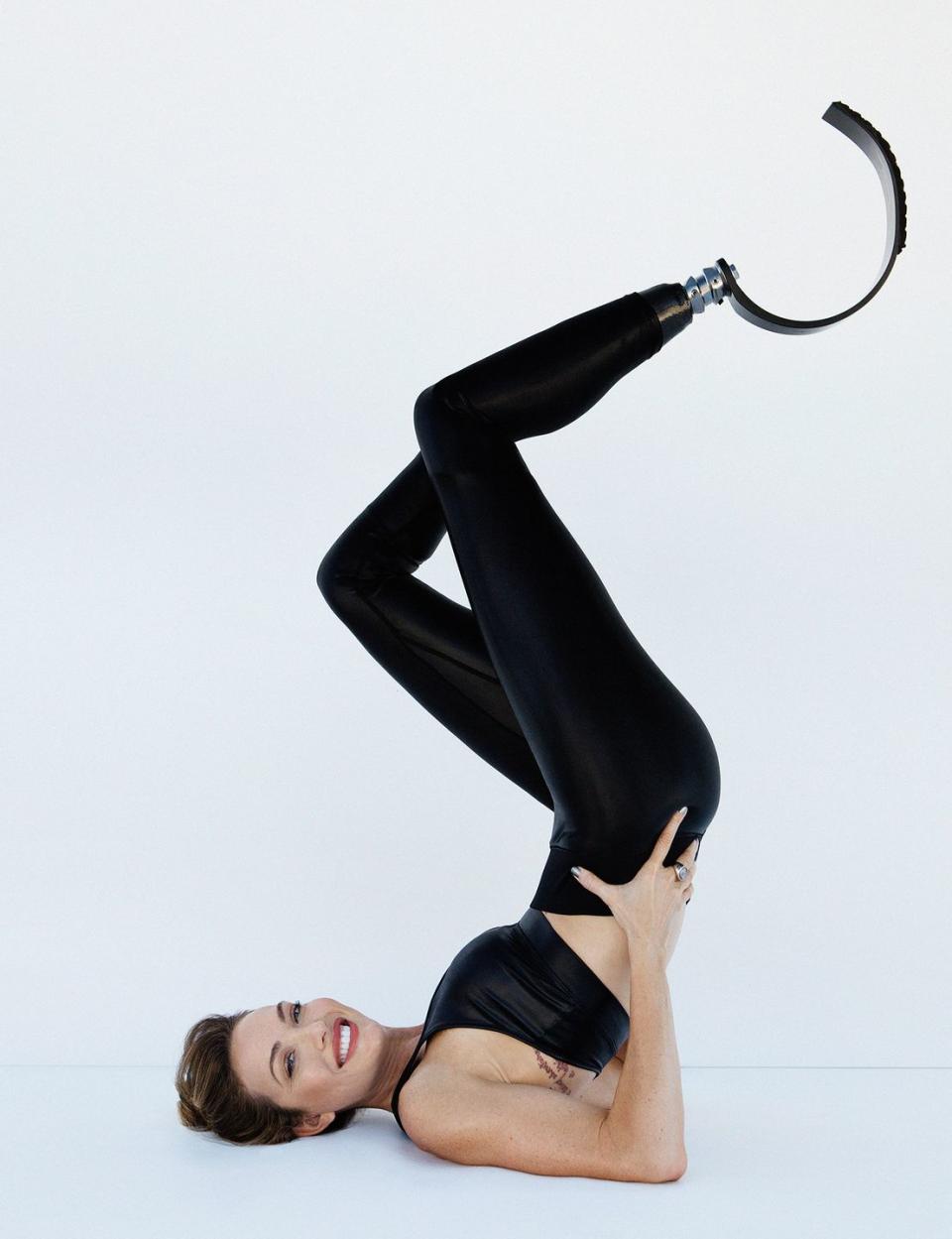
Her New Year's resolution shifts after the clot: Rather than getting in the best shape of her life, Amy focuses on re-building the muscles in her legs. She does low-impact resistance band exercises at home each day. Think: quad extensions, leg lifts, donkey kicks, and hamstring curls. Whereas jump squats used to be her go-to exercise, now she does stationary squats on her knees.
Amy lives in a three-story house in Colorado (with her husband and new golden retriever puppy) so her arm workouts have more or less consisted of "doing triceps dips up and down the stairs” multiple times a day.
She’s also diligent about eating smart to promote recovery—and to keep her arteries healthy over the long haul. “I know that if my goal is to build muscles and to help rebuild blood vessels, then I need to have plenty of protein in my diet,” she says. She even uses MyFitnessPal to make sure she’s hitting an ideal balance of macronutrients every day.
In the morning, she eats a frittata or omelet with vegetables and drinks coffee with cream, followed by a protein shake two hours later. For lunch she has a turkey sandwich (she tries to limit carbs by removing the top slice of bread) with a salad on the side, sometimes followed by another protein shake in the afternoon. Dinner typically looks like chicken with asparagus and a side of potatoes, sometimes followed by ice cream.
Her food ethos is simple—she tries to pick foods that are full of nutrients. “I could have a handful of chips, but I know I'm not getting anything from that,” Amy says. “Or I could have a handful of almonds and know that I'm getting healthy fats and fiber.”
Her next goal: using a Spin bike paired with a prosthetic specially designed to minimize pressure on her left leg. This will help her rebuild muscular endurance and improve circulation in her leg before she even attempts to use a prosthetic again.
"Your body might break at times, but as long as your spirit doesn't break, you'll get through it, and get creative and find a way," Amy says.

Amy Purdy 1.0 was a healthy teenager who began snowboarding at age 15 and dreamed of traveling the world.
Version 2.0 is best described by Amy herself: "Amy Purdy 2.0 was about living beyond limits, just pushing as hard as I needed to, and figuring out what I was capable of—the Paralympics, Dancing with the Stars, heavy fitness," she says. "Living, not just abundantly, but in beast mode."
That very inclination to push herself to the limits—beyond what most amputees would even consider possible—may have been what led her to this third chapter in her life. Amy and her doctors believe her injury occurred due to a perfect storm of events: her prosthetic pushing on her artery for the past 20 years, combined with the fact that Amy wasn’t just walking on her prosthetics—she was snowboarding, dancing, and pushing herself to her physical limits.
"I did take care of my body. I didn’t drive it to the ground, but I certainly most likely did more than most people do on prosthetic legs."
Still, Amy has no regrets. “That time and these legs have allowed me to go to amazing places, from the most beautiful mountaintops in the world to Dancing with the Stars,” she says. Her experience also provides an interesting case study—she notes there’s minimal research on the impact of high activity levels on someone who wears prosthetics.
Amy knows the next phase of her life will look different regardless of how well her recovery goes. She lived for 20 years with her biological legs, another 20 years with prosthetic legs, and now she's staring down the next two decades knowing new challenges lie ahead. "How do I want to live the next 20 years of my life?" she asks. "I want to make sure that I'm fully taking care of myself and I'm thinking more of sustainability and longevity and health and wellness versus just accomplishing everything I can."
Now, as Amy enters into what she refers to as her 3.0 phase, she asks herself: "How do I live within these limits but still live abundantly? How can I continue to give and spread love and share courage, but in a much more gentle, softer way than before?"
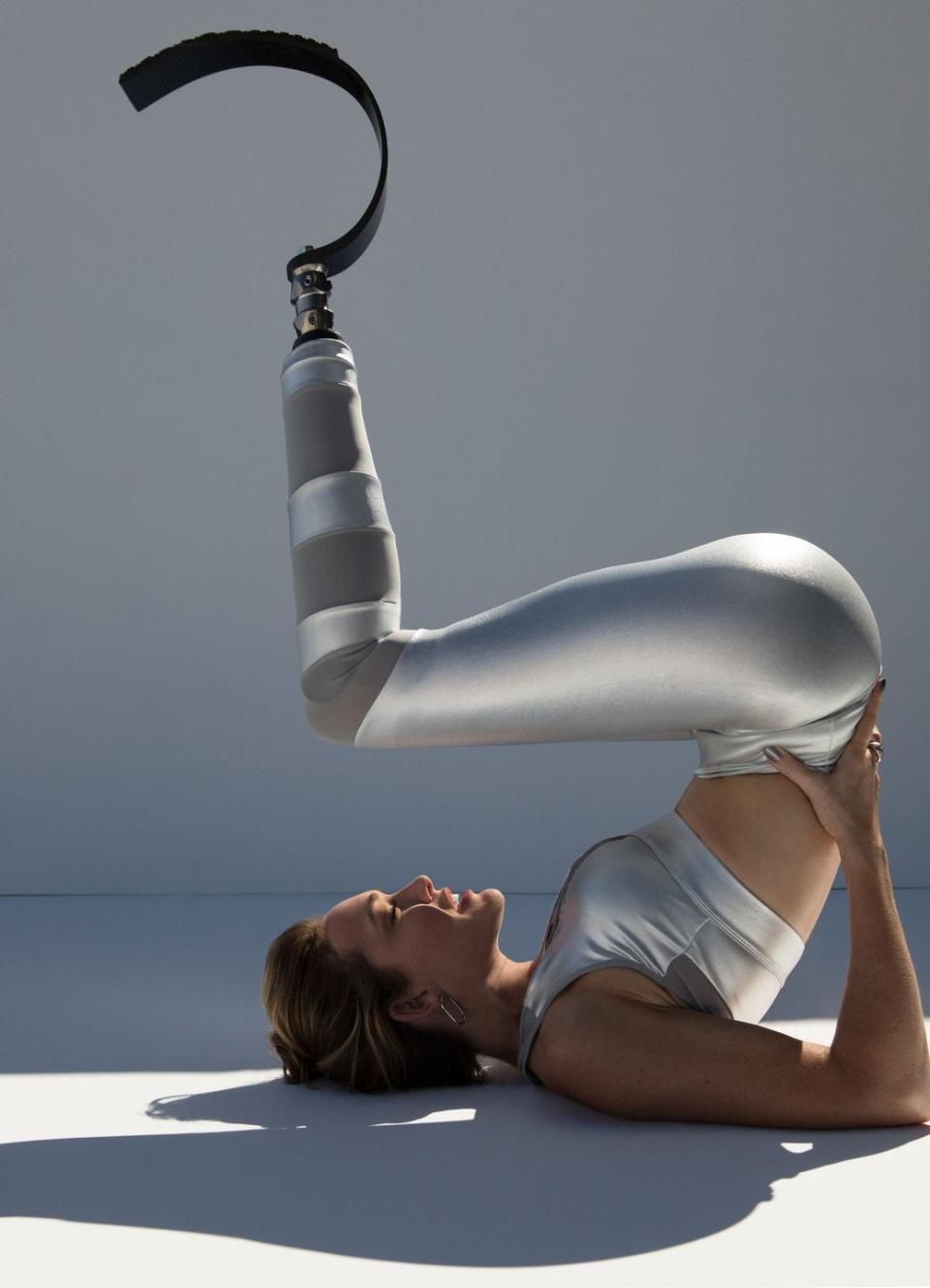

Just a few weeks before her shoot with WH in early October, Amy faces what appears to be another setback: An ultrasound reveals her left popliteal artery—the most significant source of blood flow to the legs—has completely closed. Though Amy and her doctors fear she'll need another emergency surgery, they pause after realizing Amy's leg is still warm (had blood flow been completely cut off, it would have been cold to the touch). They decide to wait a day or two before taking action.
Amy's next ultrasound reveals something remarkable: At least 10 new arteries have developed in her leg, seemingly overnight, to reroute the blood that would have flowed through her now-closed artery. "It was like roots from a tree," Amy says.
Possibly a result of her hyperbaric oxygen chamber therapy—or the fact that she's just young and otherwise healthy—the new artery growth represents hope that Amy's body is fighting to overcome its latest obstacles.
"There are moments when I can feel so weak and vulnerable because of all I've been through, and then I think, 'No, that's not it at all. I'm so strong for getting through all this. And look at what my body's doing.'"

Photographed by: Daniella Midenge · Fashion Editor: Kristen Saladino · Hair: Lisa-Marie Powell · Makeup: Fiona Stiles using CHANEL at SWA Agency · Manicure: Emi Kudo at Opus Beauty using Chanel Le Vernis · DP: Laurent Levy · Production by: Wonder Partners Aerial · Coordinators: Aeriform Arts · Senior Visual Editor: Scott Lacey · Chief Visual Content Director: Alix Campbell · Executive Visual Director: Fabienne Le Roux
You Might Also Like

